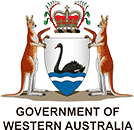Lateral internal sphincterotomy
What is an anal fissure?
An anal fissure is a tear in the skin around your back passage. It is a common problem that causes severe pain, especially after a bowel movement. It may also cause bleeding.
The condition is associated with spasm of the internal anal sphincter. This reduces the blood supply to the area and prevents healing. The treatment is aimed at breaking this cycle to allow healing to take place.
What are the benefits of surgery?
Surgery should help the anal fissure to heal and is usually recommended if the fissure has not healed with non-surgical treatments.
Are there any alternatives to surgery?
- drinking plenty of fluid and increasing the amount of fibre in your diet
- laxatives
- glyceryl trinitrate (GTN) and diltiazem are ointments that can be applied to the skin at your back passage
- botox
- local anaesthetic ointments

What does the operation involve?
Sphincterotomy simply means dividing the sphincter.
The operation is usually performed under a general anaesthetic but various anaesthetic techniques are possible.
The operation usually takes about 15 minutes. Your surgeon will make a small cut on the skin near your back passage. They will cut the lower part of the internal sphincter muscle. This will relieve the spasm in the sphincter, allowing a better blood supply to heal the fissure.
How can I prepare myself for the operation?
If you smoke, stopping smoking now may reduce your risk of developing complications and will improve your long-term health.
Improving your diet will help to speed up your recovery and will reduce the risk of the problem coming back. Drink plenty of fluid and increase the amount of fibre in your diet to avoid constipation.
Try to maintain a healthy weight. You have a higher risk of developing complications if you are overweight.
Regular exercise should help to prepare you for the operation, help you to recover and improve your long-term health. Before you start exercising, ask the healthcare team or your GP for advice.
Speak to the healthcare team about any vaccinations you might need to reduce your risk of serious illness while you recover. When you come into hospital, practise hand washing and wear a face covering when asked.
What complications can happen?
Some complications can be serious and can even cause death.
General complications of any operation
- bleeding
- infection of the surgical site (wound)
- allergic reaction to the equipment, materials or medication
- chest infection
Specific complications of this operation
- involuntarily passing wind or loose faeces
- difficulty passing urine
- permanent incontinence from your bowel
- recurrence of the fissure
Consequences of this procedure
- pain
How soon will I recover?
You should be able to go home the same day.
The pain from the fissure should improve rapidly. You should be able to return to work after a few days, depending on your type of work.
Regular exercise should help you to return to normal activities as soon as possible. Before you start exercising, ask the healthcare team or your GP for advice.
Most people make a full recovery and can return to normal activities.
The fissure can come back, so you may need further treatment.
Summary
An anal fissure is a common condition that causes a lot of pain. At first, it may be treated with ointments, creams or Botox. If this fails, surgery is the best option for a cure.
IMPORTANT INFORMATION
The operation and treatment information on this page is published under license by Healthdirect Australia from EIDO Healthcare Australia and is protected by copyright laws. Other than for your personal, non-commercial use, you may not copy, print out, download or otherwise reproduce any of the information. The information should not replace advice that your relevant health professional would give you. Medical Illustration Copyright © Medical-Artist.com.
For more on how this information was prepared, click here.
Learn more here about the development and quality assurance of healthdirect content.
Last reviewed: September 2024










